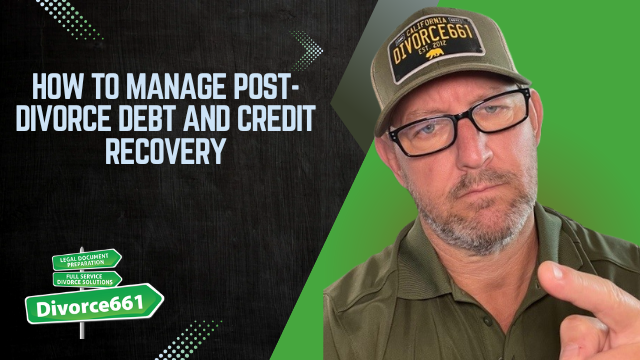How to Maintain Financial Independence After Divorce?
I’m Tim Blankenship from Divorce661. If you’re stepping into life after divorce, regaining financial independence is not only possible — it’s essential. In this article I’ll walk you through practical, realistic steps to get control of your money, build your own financial identity, and start making progress toward the goals that matter to you.
Start with a realistic post-divorce budget
The foundation of financial independence is a budget tailored to your new solo lifestyle. Begin by listing three things clearly:
- Your income: all paychecks, benefits, child support, alimony, side work.
- Your expenses: fixed (rent/mortgage, utilities, insurance) and variable (groceries, gas, entertainment).
- Your debts: credit cards, loans, outstanding balances and minimum payments.
Once you have everything listed, adjust your lifestyle to fit your income. Prioritize essentials first, cut or reduce discretionary spending, and look for even small monthly savings — they compound into stability over time.
Even small monthly savings can lead to long-term financial stability.
Establish your own financial identity
One of the most important steps is creating accounts and credit lines solely in your name. This gives you control and begins to build your independent credit history.
- Open a checking account and a savings account in your name only.
- Apply for a credit card you can manage — consider a secured card if your credit needs rebuilding.
- Set up direct deposit and automatic transfers to build a savings habit.
Monitor your credit score regularly and learn to use credit wisely: pay on time, keep balances low, and avoid opening many accounts at once. Building strong credit is a long-term game, but consistent habits pay off.
Close or separate joint accounts
Joint accounts left open after divorce create risk and confusion. Separate or close them as soon as you’re able. Practical steps:
- List all joint accounts (bank accounts, credit cards, loans, utilities).
- Move automatic payments and direct deposits to your new personal accounts.
- Close joint credit cards or remove the other party where required; request new cards in your name.
- Keep copies of statements and records during the transition.
Do this methodically to avoid missed payments or surprises.
Use a simple system to track bills and income
A straightforward tracking system removes overwhelm. I had a client who never handled the household bills. With a simple monthly checklist and tracking method she went from dependent to confident — she now saves each month and just booked her first solo vacation.
Sample tracking system:
- Monthly calendar for bill due dates.
- One spreadsheet or budgeting app to record income and expenses.
- Automatic payments for fixed bills; manual checks once a month for variable expenses.
- A short monthly review: reconcile accounts, check upcoming bills, and note progress toward goals.
Set goals and celebrate milestones
Financial goals give direction and motivation. Pick meaningful, achievable targets and track progress:
- Emergency fund: 1–3 months of expenses to start, growing to 3–6 months.
- Debt payoff milestones: small debt first, or highest-interest debt first.
- Savings goals: a solo vacation, a hobby, or a home improvement project.
Seeing progress — even small wins — boosts confidence and reinforces independence.
Use tools, checklists, and professional help
You’re not alone in this. Divorce661 offers checklists and financial tools designed for people transitioning out of marriage. We also connect you with trusted financial professionals when you need personalized advice. Our service is remote, flat-fee, and focused on helping you take the right practical steps.
Visit https://www.divorce661.com for resources and to schedule a free consultation.
Takeaway
Regaining financial independence after divorce is a step-by-step process: build a realistic budget, establish accounts and credit in your name, separate joint accounts, track bills and income with a simple system, and set clear goals. Small, consistent actions create long-term stability — and the freedom to pursue the experiences you want.
If you want help getting started, reach out for a free consultation at Divorce661. Take control one smart step at a time.




